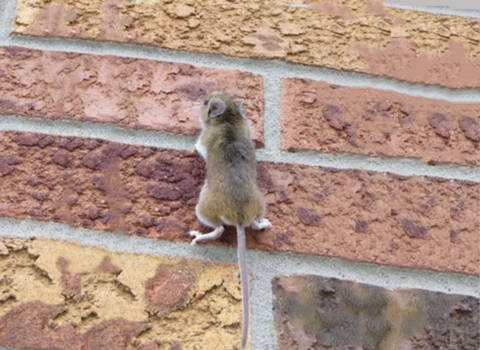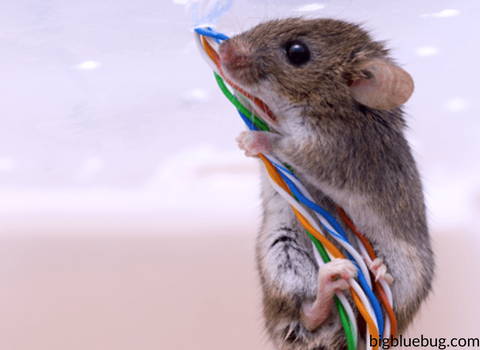Can Mice Climb Walls? How to Get Rid of Mice in Walls
The sight of a mouse in any house should not be taken negatively as a sign of mess or an unhygienic environment. There are times when these little pests easily find their way to squeeze in any part of one’s home and cause trouble.
Can mice climb walls? This is among common questions of homeowners especially when they start noticing signs of activities from these pests. You should know that mice and rats are good climbers and can climb vertical walls.
When the surface is rough enough, they can shimmy their way up between drain pipes and walls. On the other hand, rats are good swimmers and can access your house through the toilet bowl’s water traps.
Aside from being good climbers and swimmers, mice and rats can jump to a height of 18 inches and easily squeeze in small holes and cracks. This is also why they are very difficult to catch.
Can Mice Climb in Any Walls in Your Home?
Among the questions that homeowners tend to ask is whether these rodents especially a mouse can climb any surface. Well, the answer is that the properties present on the surface will tell if a mouse can actually climb the walls in your home or not.
It is their tiny claws that give them the ability to latch onto anything with rough or uneven surfaces. This includes walls with a porous finish.
Types of Walls that Any House Mouse Can Climb
Concrete
Because of the countless air bubbles in concrete walls, thus giving it rough surfaces. When the pinholes are big enough, mice can grip them with their claws and climb. Siding, stucco, shingles, and wood finishing are also known to provide great gripping surfaces that make it possible for mice to climb walls vertically.
Walls that have Climbing Props
Unfortunately, not all homeowners have bare walls in their entire house. This is the reason why mice can still find other ways to climb higher entry points like air ducts.
They can use electrical wiring or cords alongside walls. Using their paws, they can grip tightly around these wirings, and they use their tails to give them balance and prevent them from falling. Because mice are light and small enough, they can easily climb small cords and wires without pulling down the appliance.
Inside Walls
Mice would usually stay out of your sight, so they will more likely move around the inside of walls. Because there is a lot of insulation, pipes, wires, and support structures inside the walls, it is much simpler for mice to move from one area of the house to another.
The insulation inside the wall also gives the rats and mice a great opportunity to establish their nests.
Signs that There are Mice in Walls, Crawl Space or Other Areas of Your Home
As a homeowner, it is more likely for you to hear mice in any area of your home than see them. It is less likely for you to see them unless the mouse infestations are already causing a serious problem.
Mice can squeeze into holes that are about a quarter of an inch in diameter. These holes can be in the narrowest spaces and behind appliances, which are places where you cannot find them. Since these holes are usually along with carpeted areas as well as in corners, it might be difficult for you to spot them without close inspection.
Without noticing the signs of their presence, they can build their nests and reproduce quickly. Thus, leading to more problems.
Other signs that there are mice in your house are the following:
Presence of mouse droppings and chewing.
Sounds of mice in walls.
Chewed corners of cabinets and cardboard boxes.
Among the biggest problems in homes with mice infestation is when the pest gets access in your home during the initial construction. It would be impossible to keep them out when the house is not yet complete.
Many openings will make it impossible to seal all tiny holes completely most especially around the exterior. It will require newly constructed homes for pest treatments upon completion.
How to Deal with Your House Mouse Problem?
Mouse traps are still considered the standard when it comes to catching rodent pests.
If you want a lethal trap, you can go for snap traps that are designed to kill mice instantly instead of using poison bait traps. The last thing you want is mice dying and decaying in any part of your walls. Snap traps we recommend are: Predator FastSet Mouse Trap (2pk), Tomcat Mouse Snap Traps 2-Pack, or Victor Metal Trap 2pk.
Use bait traps with peanut butter and then place them along walls where mouse activity is suspected.
If you notice that mice keep evading the traps you left in the open, you might need to drill a small hole in your drywall. It should be a few inches off the floor and then you can place the trap by the hole.
When to Call a Pest Control Professional?
If you think you cannot handle mice infestations from the root cause, you might want to consider calling for a pest control professional.



